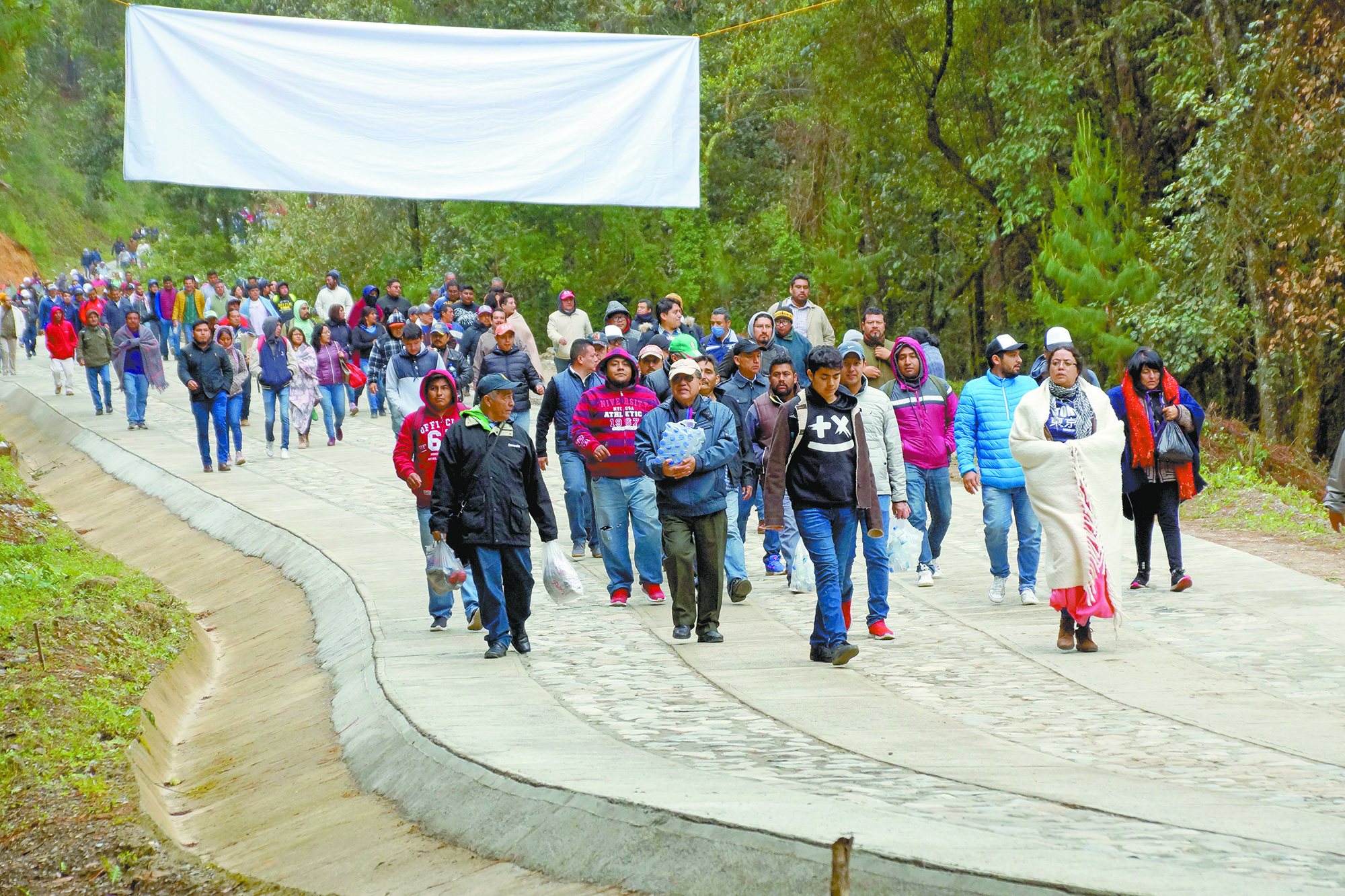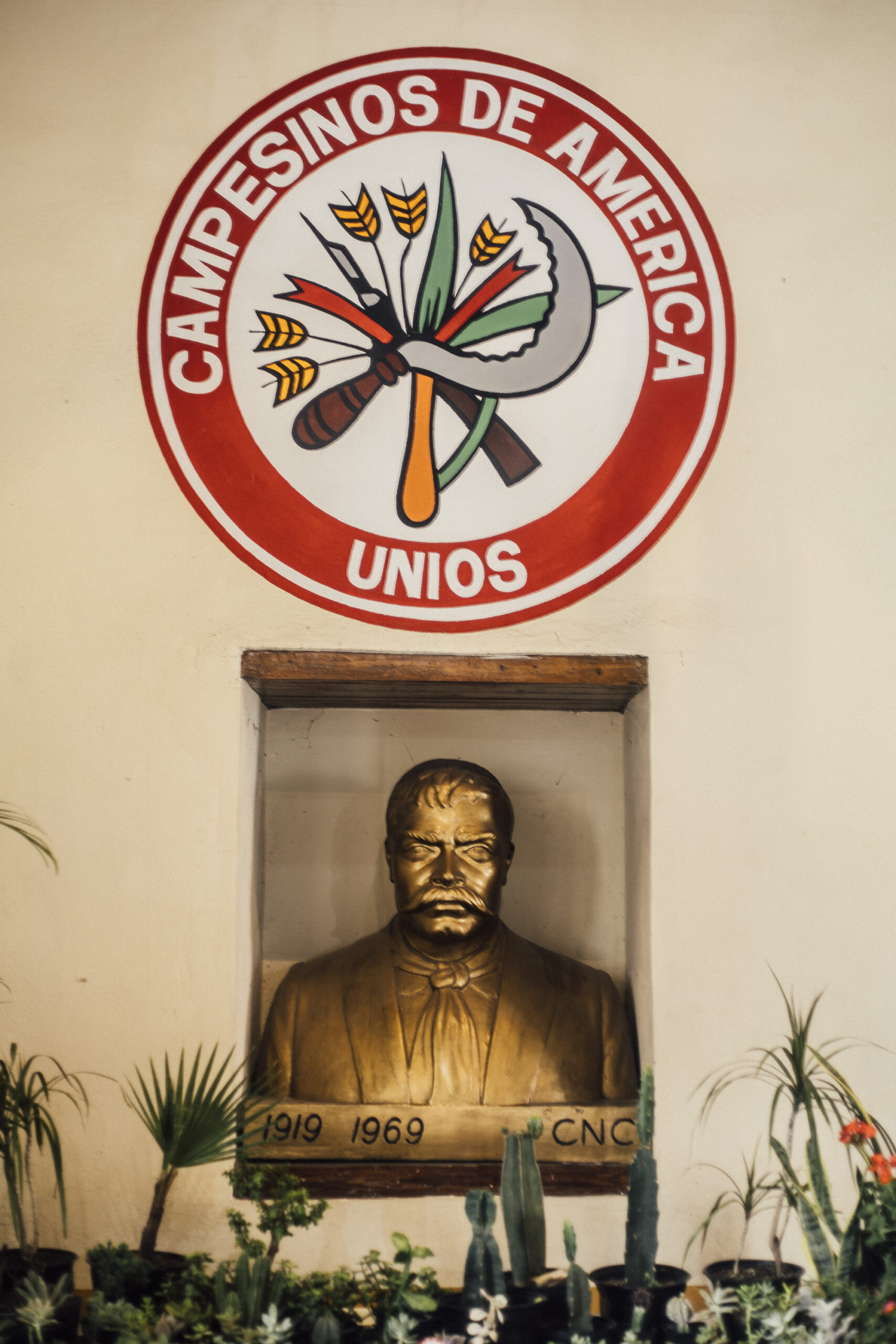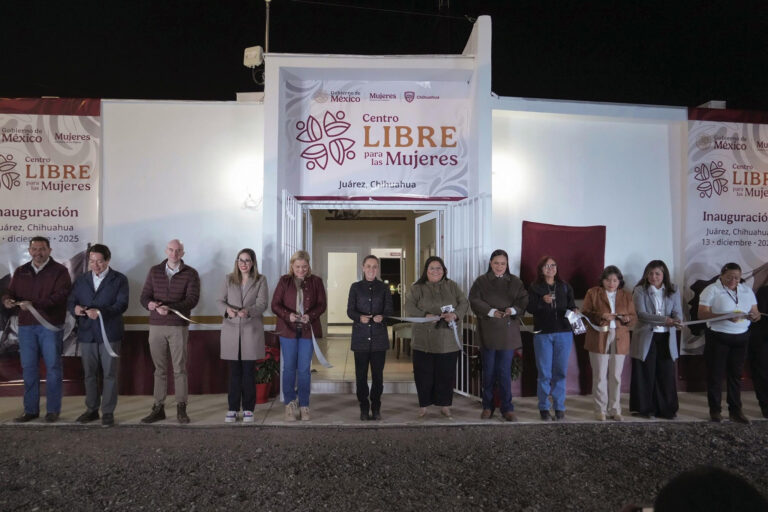The 4th Transformation & Rural Mexico
This article by Milton Gabriel Hernández García originally appeared in the 295th edition of Memoria: Revista de Crítica Militante. We thank Memoria for permission to reprint the article and encourage you to support Memoria and the Center for Studies of the Labor and Socialist Movement.
Agreements Between the Peasant Movement and AMLO

On April 10, 2018, before more than 5,000 farmers from across the country, Andrés Manuel López Obrador (AMLO) and more than 100 social organizations signed the “Plan de Ayala Siglo XXI 2.0” in Jerez, Zacatecas. The plan was intended to establish a new political pact between farmers and the Mexican state, with a strategic focus and in the public interest. AMLO said on that occasion: “We are signing this agreement to end the disdain and abandonment of the countryside and begin a new phase of reviving productive activity.”
The President also stated that the regeneration of rural towns and communities would be one of his administration’s priorities, promoting productive activities “as hasn’t been done in decades,” emphasizing that the new policies aimed at the countryside would prioritize small and medium-sized producers, ranchers, foresters, and fishermen; Indigenous peoples, Afro-Mexicans, women, and young people.
He acknowledged that Mexico is the center of origin and diversification of corn, so it is necessary to recover its production, “along with beans, rice, meat, milk, and timber, which have been massively imported during the neoliberal period.” He pledged to set guaranteed prices and ensure that subsidies reach farmers directly.
As part of the “Ayala 21st Century Plan 2.0,” the ban on genetically modified corn was also established, along with the gradual replacement of agrochemicals with organic fertilizers, as well as the urgent need to initiate a transition toward a new production model based on agroecological practices.
Finally, the President pledged before the peasants present at that historic assembly to create a national system for the protection and improvement of Mesoamerican agrobiodiversity, native corn, and tortillas. This system, in addition to preserving the diversity of milpa crops and native seeds, would allow those who work the land not only to recover their production costs but also to earn a profit. He also indicated that a key focus of his administration would be the restoration of coastal fishing and fishermen’s cooperatives.

Fourth Transformation Rural Development Programs
With the first administration of the Fourth Transformation already in place in 2018, one of the priority programs implemented for rural recovery was “Production for Well-being” (PpB). It was created with the goal of providing direct support to small and medium-scale producers of corn, beans, wheat, rice, amaranth, chia, coffee, sugarcane, cocoa, and honey.
This program provides financial resources to farmers for productive activities, the purchase of inputs, the hiring of labor, and the rental of machinery or equipment, with the goal of contributing to food self-sufficiency and increasing productivity through agroecological practices.
It has two complementary strategies: a) technical, organizational and agroecological support and b) seeking access to financing through low-interest credit.
It supports 2.5 million producers, covering 6 million 597 thousand hectares. In rural communities, it clearly differs from PROCAMPO, as PpB provides direct support, without intermediaries, and delivers timely support according to the agricultural cycle.
It is distinguished by its agroecological approach, and it also proposes a break with the paradigm of old agricultural extensionism, promoting both support and training from farmer to farmer.
New legislation is needed against privatization and opening the ejido to the market, guaranting that social ownership of land remains inalienable, imprescriptible, and non-transferable, and that places agrarian institutions at the service of social ownership.
Another strategic program of AMLO’s administration was Sembrando Vida (Sowing Life); which owing to its results, has continued into the current administration of Claudia Sheinbaum. According to its operating rules, it aims to address two of the most pressing problems in rural Mexico: rural poverty and environmental degradation, through the productive reappropriation of territories through ecological restoration processes.
When it began, the goal was to generate direct employment for 400,000 producers, as well as to develop alternatives to diversify family incomes, thereby stemming migration and boosting production processes that strengthen value chains and marketing.
This program prioritizes areas affected by fires, diseases, natural disasters, forest pests, degraded soils, or loss of vegetation cover. It aimed to plant one million hectares of fruit and timber trees. In fact, by the end of AMLO’s six-year term, it had already surpassed this goal, having covered at least 1.2 million hectares with more than 1.4 billion fruit and timber trees. Today, it is the largest reforestation program in the world from an agroforestry perspective.
Each farmer who participates in Sembrando Vida works on 2.5 hectares, where they establish two types of plots: a) Agroforestry Systems (SAF), which include fruit and timber trees with agroecological management and b) Milpa Intercalated with Fruit Trees (MIAF), which is fundamentally a diversified agroecological milpa.

Organizationally, the program is structured into Peasant Learning Communities (PLCs), comprised of 25 people. They offer savings practices, farmer-to-farmer training, and marketing strategies. Each PLC has biofactories where different bio-inputs are produced, as well as community nurseries where native species are propagated.
The program’s environmental impact is currently considered such that the National Institute of Ecology and Climate Change (INECC) reports that Sembrando Vida has a mitigation potential of 4 million tons of carbon dioxide, and by 2030 it will rise to 21 million.
Another fundamental, but little-known, program is Abasto Rural, which operates through a network of community stores across the country, based on grassroots organization (community assemblies and councils).
Abasto Rural organizes and operates the distribution of basic and complementary products, guaranteeing supply, the lowest price, quality, and nutritional value, benefiting people living in marginalized and poor conditions. This program has benefited 23 million people through nearly 25,000 stores supplied by more than 4,000 vehicles.
A fundamental part of the strategy for the countryside involves another equally little-known program: BIENPESCA. It provides $7,500 in support to coastal fishermen, directly and without intermediaries.
This resource is currently allocated to more than 200,000 families who work at sea. They are primarily shrimp and other species fishermen who understand the importance of receiving this support before August and September, when the crustacean fishing bans are lifted. This way, they have time to repair their nets and boats without having to go into debt.
Something unique about this program is that it doesn’t only recognize fishermen who go out to sea to catch fish. The subsidy also extends to women who fish or participate in post-fishing activities, such as gutting, filleting, or skinning marine species.

Another component of the 4T’s rural development strategy is the Artisanal Rural Roads Program, which improves road accessibility and infrastructure for the entire population. Since these roads have reached communities, they have greater opportunities to supply local agricultural products to regional markets. Furthermore, travel times to hospitals are shortened.
These roads are built using local labor, thereby strengthening community economies. The importance of this program also lies in its aim to address a long-standing gap in rural communication. To date, more than 2,000 kilometers of paved roads have been built on 221 roads in Oaxaca, Guerrero, and Sonora.
All of these programs have generated significant changes in the Mexican countryside, as reflected in multiple indicators. One of them is the 2022 National Household Income and Expenditure Survey conducted by INEGI, which revealed that, in rural areas, the average current household income grew by over 30%, while among the indigenous population, it grew by over 43%.

Historical Debts, Outstanding Debts, Persistent Problems
While we can see significant progress in rescuing the Mexican countryside during the first administration of the Fourth Transformation, there are still many problems to address, the vast majority inherited from neoliberal governments. Others stem from a lack of attention and dialogue with peasant organizations, which have legitimately expressed a series of sectoral demands.
I believe that the design and implementation of comprehensive programs that serve the entire population living in the country’s rural areas, without the involvement of intermediaries, is appropriate. But in addition to implementing these programs, I also maintain that it is a priority for the legislative, executive, and judicial branches, as well as the various levels of government, to not lose sight of or fail to address the specific needs and problems of the various social sectors in rural Mexico.
In the following lines, I address some of the main problems faced by various productive sectors in the Mexican countryside, which in turn reflect the historical demands and needs of rural collectives.
One of the sectors that has been persistent in pointing out that its demands were not addressed by the first administration of the 4T is the coffee sector. Mexico currently ranks 11th in world production of quality coffee, with more than 500,000 producers in 15 states. In this context, Chiapas ranks first, with 41% of the national volume.
However, this sector has been hit hard in recent years by several factors. One of them is the significant impact on production in recent years due to the rust fungus, in addition to drought and the effects of climate change. On the other hand, several years of very low prices have accumulated, leading to a significant reduction in coffee production.
Another negative factor is that domestic consumption continues to be dominated by commercially produced instant coffee, rather than quality whole bean coffee. Furthermore, the pressure exerted by transnational corporations, which causes downward price fluctuations, has been severe.

In this regard, coffee growers’ organizations have denounced that public policies have continued to favor companies like Nestlé and AMSA and have not focused their support on small and medium-sized producers. The National Coordinator of Coffee Growers’ Organizations (CNOC) has demanded that the federal government increase the number of coffee growers enrolled in the Production for Well-being, Sowing Life, and National Fertilizer Programs from 200,000 to 350,000.
It has also proposed that urgent support is needed to renovate aging coffee plantations affected by coffee rust, as well as to establish a national registry of coffee growers, which currently does not exist. Furthermore, it proposes promoting an agroecological transition in coffee production to improve yields and income, and preserve the environment, reducing the use of agrochemicals and promoting bio-inputs.
The organizations also demand support to strengthen collective organization, enabling access to better markets, infrastructure support for pulping, drying, grinding, and roasting coffee, as well as certification of their organic production.
It is also considered necessary to support those who have shade-grown coffee plantations for the environmental services they provide, as these plants protect biodiversity and the soil of watersheds, regulate microclimates, produce oxygen, and capture carbon.
Another demand is the creation of a Mexican Coffee Development Commission, which would regulate imports and marketing schemes, guarantee fair prices, promote consumption, and provide access to marketing.
Coffee growers’ organizations are also demanding the creation of a coffee law that guarantees quality and safety, prohibits blending with artificial flavorings and sweeteners, and guarantees fair prices. So far, no progress has been made in resolving these demands.
Another sector that has required specific attention to its problems is that of beekeepers. In our country, honey production is an important activity in rural areas, with approximately 10,800 producers and 409,000 hives.
Beekeeping clearly depends on the health of ecosystems. However, there is a significant negative impact on beekeeping production due to the presence of megapig and poultry farms, massive deforestation for monoculture crops, the introduction of genetically modified organisms, and the use of pesticides.
Because of this, there is a strong social demand for a ban on pesticides that are highly dangerous to bees, as these practices are the main cause of beehive poisoning and mass deaths. There is also a demand that beekeeping be considered an independent activity from the livestock sector and that its true value be recognized as a primary activity, a priority for ecosystem conservation. Furthermore, there is a strong demand for the approval of a Law for the Promotion and Protection of Beekeeping and Meliponiculture , as well as official standards to regulate the application of aerial spraying.
As in other countries, beekeepers in Mexico have also protested unfair competition from Chinese honey. They are demanding labeling for honey, indicating the country of origin and the percentage of sugar it contains. Beekeepers are also demanding fair prices, as well as promoting the consumption of organic domestic honey, updating the national census of beekeeper producers, expanding direct sales to the “Food for Well-being” program, and promoting its consumption in schools and in the basic food basket. To date, these demands have not been met.
Regarding livestock farming, numerous problems also remain unaddressed. In our country, approximately 109.8 million hectares are dedicated to livestock farming, ranking it 11th in the world in this sector of the economy.
An estimated 842,000 people feed and care for livestock, so livestock contributes 39.7% to the primary sector’s Gross Domestic Product (GDP). For example, our country produces nearly 4 million tons of chicken, 3 million tons of eggs, 2.2 million tons of beef and 1.7 million tons of pork, 100,000 tons of sheep and goat meat, and 13 billion liters of milk annually. This production meets 80% of Mexico’s demand for animal protein.
It is important to note that global demand for and production of livestock products are increasing rapidly due to population growth, rising incomes, and changes in lifestyles and diets.
On the other hand, livestock farming systems have a significant impact on the environment, including air, land, soil, water, and biodiversity. The fundamental problem of livestock expansion, in addition to the destruction of natural habitats, is overgrazing and the depletion of grasslands. The sector faces the challenge of reducing its carbon and water footprints, as well as transitioning toward sustainable agrosilvopastoral systems.
For its part, the livestock sector, grouped under the National Confederation of Livestock Organizations (CNOG), has repeatedly demanded that federal authorities monitor the sanitary standards of imported meat, in order to prevent disease outbreaks and unfair competition.

Regarding fishing, it is important to recognize from the outset that Mexico is one of the nations with the longest coastline in Latin America, boasting 11,122 kilometers of coastline. It has 2,500,000 hectares of inland waters, including rivers, streams, lakes, lagoons, estuaries, and dams. We have access to the sea through two oceans, the Pacific and the Atlantic, which translates into a wealth of fish and seafood, which contribute and can continue to contribute to the food security of its population. Nearly 700 species are caught commercially on both coasts, and our country contributes 2.2 percent of global fish production.
Despite having so many kilometers of coastline and obtaining a varied supply of seafood products annually, approximately two million tons, fish and seafood consumption is well below the world average, and the living conditions of coastal fishermen are extremely precarious.
For years, fishing organizations such as cooperatives and federations of cooperatives have been putting forward a series of demands and proposals to restore the viability of coastal fishing, but unfortunately, they have not been taken into account by the various levels of government or the legislative branch. Among them, we can mention the following:
- Initiate and promote a process of revitalization of fishing organizations;
- Ensure increased financing for fishing and aquaculture infrastructure, as well as promote the modernization of the national fishing fleet;
- Update the Responsible Fisheries and Aquaculture Law (LGPAS), as well as approve its regulations;
- Implement a program for the ecological restoration of degraded estuaries, bays, marshes and wetlands;
- Establish exclusive fishing areas for local fishermen, as well as fishing reserves or shelters in consensus with the fishermen;
- Strengthen surveillance actions to eradicate illegal and poaching fishing;
- Strengthen and democratize state fisheries and aquaculture councils, as well as local fisheries committees;
- Facilitate fishing permits for fishermen who have not yet been able to obtain them;
- Implement local and regional fisheries regulations, with rules for access to marine resources;
- Carry out a National Fisheries and Aquaculture Census and
- Recognize the rights of indigenous peoples and women in fisheries legislation.
So far, progress in resolving these historical demands has been incipient, as fishing remains an under-recognized activity, both in its cultural and economic dimensions, and also in its contribution to national food self-sufficiency.
Forty-three percent of Mexico’s population belong to Indigenous communities, and an estimated 42% receives less than the minimum wage.
One rural sector to which our country undoubtedly owes the greatest historical debt is that of agricultural day laborers, who number approximately 2.5 million people. As is well known, they work in agro-industrial complexes producing vegetables, grains, berries, tobacco, sugarcane, and many other crops. This figure rises to almost 9 million if we consider their families, who often migrate with the day laborers.
Forty-three percent of the population belongs to Indigenous communities, and an estimated 42% receives less than the minimum wage. They mostly travel from the southeast to states such as Jalisco, Michoacán, Sinaloa, Sonora, Baja California, Chihuahua, and others.
Their working conditions are adverse, as they have no job security. They work grueling workweeks of more than 40 hours and live in conditions of extreme exploitation. They work without contracts, without benefits, and with very low wages.
They experience long journeys in unsafe conditions and face discriminatory treatment and various forms of violence. In the fields, they live in precarious health and hygiene conditions: overcrowding, poor nutrition, constant exposure to various pesticides, and lack access to basic medical services.
Child labor exists in agricultural fields where day laborers work, and it has been documented that child laborers lack access to education. Extreme cases of exploitation have been recorded, such as that of day laborer families working in sugarcane fields or children working in tobacco harvesting in Nayarit.
Due to these adverse conditions, day laborers have mobilized strongly to fight for their rights since 2014. Let’s not forget that this sector never stopped working during the COVID-19 pandemic. Thanks to their work, there were no food shortages, although many day laborers became infected and fell ill.
An important step forward during AMLO’s administration was the establishment by the National Minimum Wage Commission (CONASAMI) of a base wage for this sector for the first time in history. However, one priority that day laborer organizations consider to be a social program focused on the day laborer population, which is undoubtedly the most precarious in the Mexican countryside. If it existed, this program should have at least the following components: a) provide labor and legal counseling to day laborer families when their rights are violated; b) guarantee medical care in agricultural fields; c) guarantee culturally relevant education for day laborer children; and d) guarantee day care centers and shelters for day laborer families, since, although some have already been built, they are white elephants.
As in previous cases, these demands have not been met.

Some Proposals for the Immediate Future
We believe that, in addition to addressing the specific demands and problems of the various rural sectors outlined in the previous section, a series of actions, measures, projects, and programs are a priority. These actions, measures, projects, and programs, as part of public policies in the second stage of the Fourth Transformation, contribute to ensuring access to justice and better living conditions for people living in rural areas, are essential.
In the area of agrarian justice, new legislation is needed that does not seek to privatize and open the ejido to the land market, that guarantees that social ownership of land remains inalienable, imprescriptible, and non-transferable, and that places agrarian institutions at the service of social ownership (National Agrarian Registry, Agrarian Attorney’s Office, and Agrarian Courts).

It is also essential to strengthen agrarian communities, especially social participation in assemblies, women’s access to land in ejidos and agrarian communities, and the recognition of their rights. It is a priority to create a National Program for the Regularization of Land Tenure in agrarian communities, as well as to update the national agrarian registry, promote generational renewal in agrarian representation structures, and guarantee fair compensation to ejidos and communities affected by expropriations for public utility projects, such as dams, roads, highways, airports, gas pipelines, electricity pipelines, and others.
In the area of production, the creation of a Law on Agroecological Transition and Production for Self-Consumption, a National Agroecological Transition Strategy, the reactivation of a National Seed Company, and a national rural credit and financing institution are important.
It is necessary to continue supporting small, but also medium- and large-scale agro-industrial producers, while seeking a reorientation toward more sustainable production and a fairer labor system for their workers.
Another direct support strategy would be to implement a national government procurement system from agroecological producers to supply public institutions (the military, schools, hospitals, universities, etc.), as well as to strengthen the various community forest management initiatives at the national level.
The defense and protection of Mexican agroecosystems remains a priority, that is, continuing the ban on the commercial and experimental cultivation of genetically modified corn, as well as promoting the production of native corn. Also, continuing the strategy of gradually replacing glyphosate with bio-inputs and expanding it to other agrochemicals, as well as protecting the milpa system and other traditional agroecosystems, encouraging the adoption of Milpa Intercropped with Fruit Trees (MIAF) and Agroforestry Systems (SAF).
For the Mexican countryside to remain viable and have future prospects, it is urgent to promote generational renewal, allocating resources to encourage the participation of young people in agricultural activities, as well as expanding recognition of the agrarian, political, cultural, social, and productive rights of rural women.
Contrary to the government’s policy of refusing to engage in dialogue, I maintain that public policies must be designed and implemented in coordination with peasant, indigenous, and fishing organizations that operate in a non-patronage manner.
At the legislative level, it is also a priority to gradually dismantle the legal framework created by the neoliberal regime, as laws on water, fishing, agriculture, ecological balance, biosecurity, and hydrocarbons, among many others, that have facilitated dispossession and privatization in the countryside, remain in force. Furthermore, it is of utmost importance to create new specific laws to strengthen and promote rural activities such as community forestry, beekeeping, and coffee growing, among others.
Regarding welfare programs, it is necessary to reorient, strengthen, and expand successful programs such as Sembrando Vida (Sowing Life), Producción para el Bienestar (Production for Well-being), Bienpesca (Good Fishing), Rural Roads, Precios de Garantía (Guaranteed Prices), and Abasto Rural (Rural Supply), among others. A national rural financing strategy must be created to strengthen peasant production, as well as a national rural marketing strategy with fair prices. These programs must increase their budgets, reach all communities, especially the most remote ones, and include social stakeholders who have not benefited so far.
The creation of a State Secretariat for Science and Technology opens up significant opportunities for the development of a national scientific research strategy geared toward rural development, coordinating efforts currently scattered across various universities and research centers such as the Postgraduate College, the Autonomous University of Chapingo, the Antonio Narro University, as well as state universities and technological institutes. The new paradigm of rural development in the second stage of the Fourth Transformation requires the incorporation of dialogic and participatory paradigms that recognize the contributions of peasant and indigenous knowledge and expertise in the management of common goods and in agricultural, livestock, fisheries, and forestry production.
Finally, a painful and urgent issue is the pacification of rural territories. In this regard, peasant organizations have pointed out that the security and pacification strategy in rural areas cannot operate in the same way as in urban contexts. Coordination between the National Guard and community, agrarian, and traditional authorities is essential. Furthermore, it is urgent to address Rural Internally Forced Displacement (RIDF), as it is estimated that of the nearly 400,000 people displaced by violence, 87.5% come from rural communities.
The progress made in rural areas since the first administration of the 4T has been significant, but much remains to be resolved. In the paths yet to be taken, the voice of rural organizations is fundamental, as they already have diagnoses and proposals for formulating and implementing strategic public policies that are technically, environmentally, socially, culturally, and economically viable. A government that claims to be responsive to social needs must not abandon dialogue with the organized community.
-
People’s Mañanera December 23
President Sheinbaum’s daily press conference, with comments on travel across the country, ENCODAT, cardiac care, new ISSSSTE clinics, Texas navy accident, economic activity, and scrapping the video game tax.
-
Mexican Unions Formerly Affiliated with PRI are now with MORENA
President Sheinbaum has rejected corporatism and the bussing in of supporters, yet charro unions maintain a massive presence at government events in the Mexico City’s Zócalo.
-
Culture | Labor | News Briefs
Land of the Godínez: Work, Obedience & Dispossession in Contemporary Mexico
José Baroja’s satire is, in reality, pure sociology: the expression of an economic order & labour regime in Mexico that normalizes long hours, insufficient wages, constant evaluations, identity loss and the sacrifice of a personal life.




